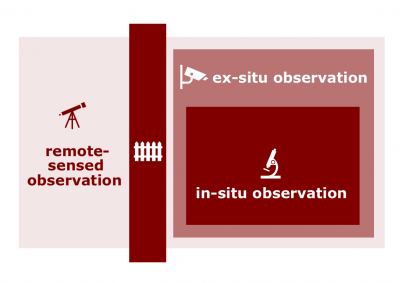Difference between revisions of "Observation"
(→Related lectures) |
|||
| Line 1: | Line 1: | ||
[[File:Observation.png|400px|thumb|right|[[Observation]]]][[Observation]] is the [[data-gathering technique]] that is based on watching something or someone; an [[observation]] can also be a statement based on something one has seen, heard, or noticed. In [[business analysis]], [[observation]] is a means to elicit requirements by conducting an assessment of the stakeholder's work environment. | [[File:Observation.png|400px|thumb|right|[[Observation]]]][[Observation]] is the [[data-gathering technique]] that is based on watching something or someone; an [[observation]] can also be a statement based on something one has seen, heard, or noticed. In [[business analysis]], [[observation]] is a means to elicit requirements by conducting an assessment of the stakeholder's work environment. | ||
| + | ==Definitions== | ||
| + | According to the [[BABOK Guide|BABOK Guide (3rd edition)]], | ||
| + | :[[Observation]] ([[business analysis]]). Studying and analyzing one or more stakeholders in their work environment in order to elicit requirements. | ||
==Types== | ==Types== | ||
Revision as of 07:14, 7 July 2020
Observation is the data-gathering technique that is based on watching something or someone; an observation can also be a statement based on something one has seen, heard, or noticed. In business analysis, observation is a means to elicit requirements by conducting an assessment of the stakeholder's work environment.
Definitions
According to the BABOK Guide (3rd edition),
- Observation (business analysis). Studying and analyzing one or more stakeholders in their work environment in order to elicit requirements.
